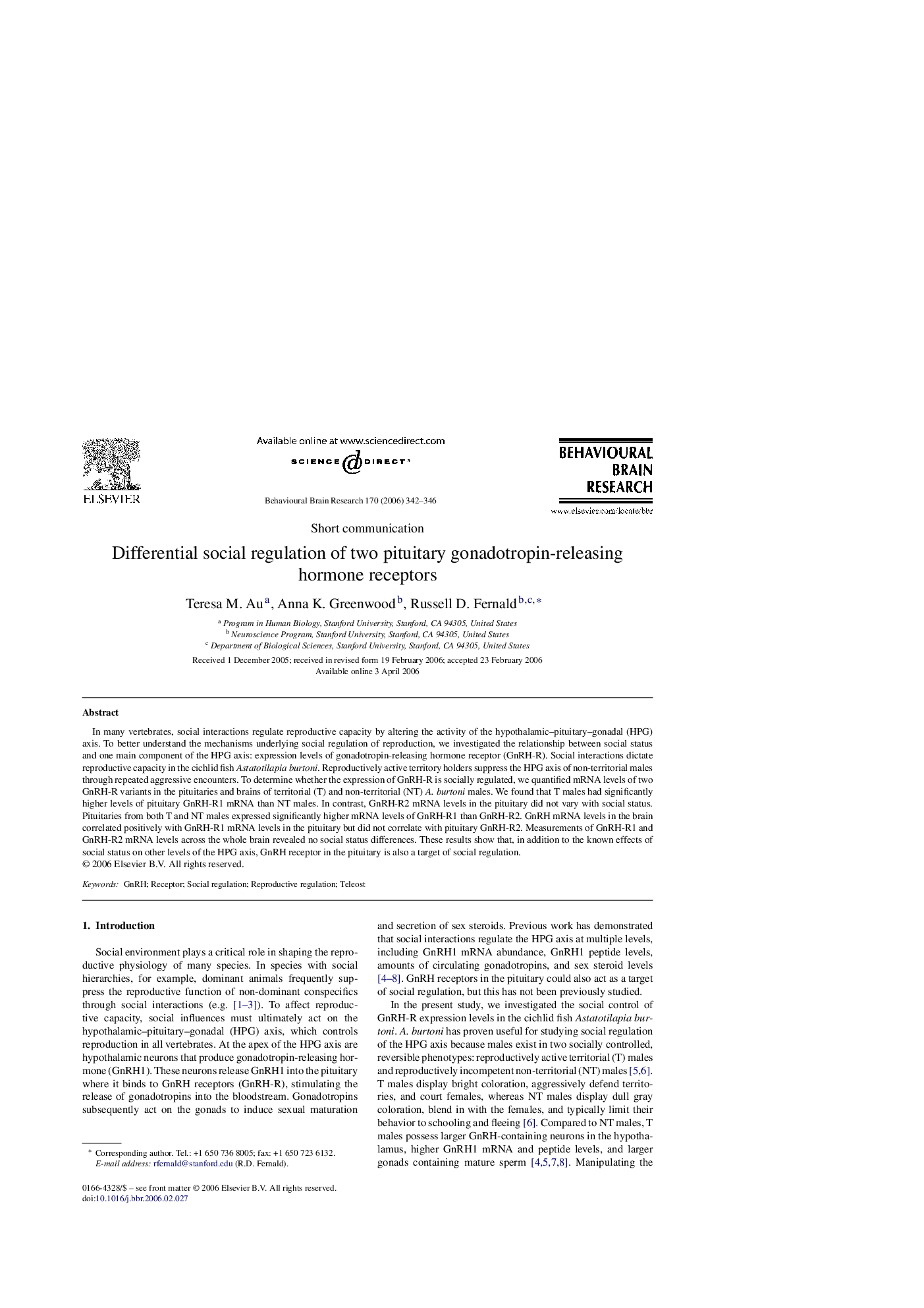| Article ID | Journal | Published Year | Pages | File Type |
|---|---|---|---|---|
| 4315830 | Behavioural Brain Research | 2006 | 5 Pages |
In many vertebrates, social interactions regulate reproductive capacity by altering the activity of the hypothalamic–pituitary–gonadal (HPG) axis. To better understand the mechanisms underlying social regulation of reproduction, we investigated the relationship between social status and one main component of the HPG axis: expression levels of gonadotropin-releasing hormone receptor (GnRH-R). Social interactions dictate reproductive capacity in the cichlid fish Astatotilapia burtoni. Reproductively active territory holders suppress the HPG axis of non-territorial males through repeated aggressive encounters. To determine whether the expression of GnRH-R is socially regulated, we quantified mRNA levels of two GnRH-R variants in the pituitaries and brains of territorial (T) and non-territorial (NT) A. burtoni males. We found that T males had significantly higher levels of pituitary GnRH-R1 mRNA than NT males. In contrast, GnRH-R2 mRNA levels in the pituitary did not vary with social status. Pituitaries from both T and NT males expressed significantly higher mRNA levels of GnRH-R1 than GnRH-R2. GnRH mRNA levels in the brain correlated positively with GnRH-R1 mRNA levels in the pituitary but did not correlate with pituitary GnRH-R2. Measurements of GnRH-R1 and GnRH-R2 mRNA levels across the whole brain revealed no social status differences. These results show that, in addition to the known effects of social status on other levels of the HPG axis, GnRH receptor in the pituitary is also a target of social regulation.
